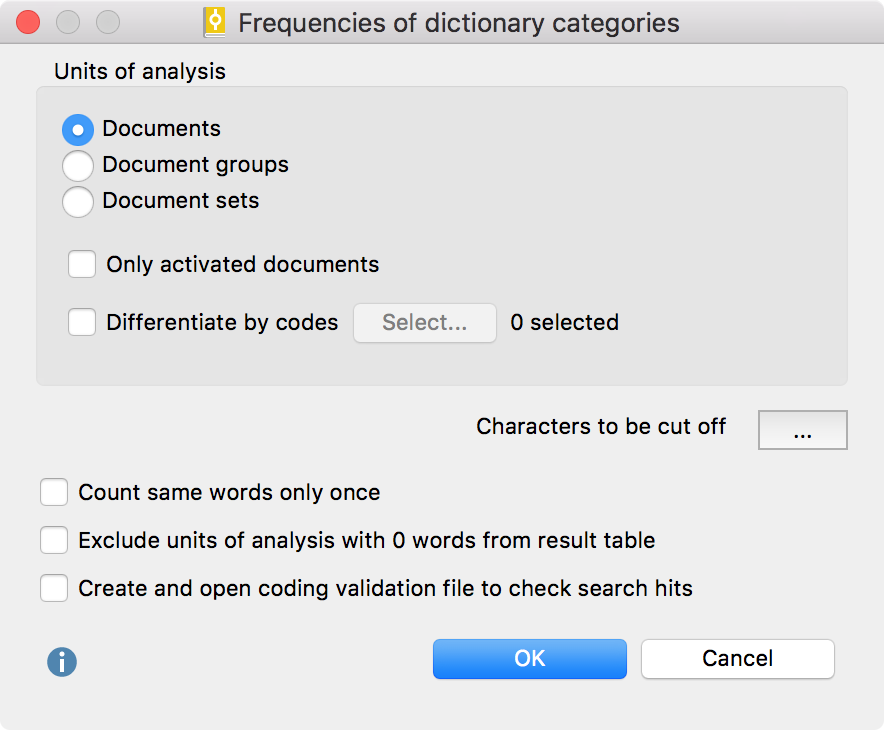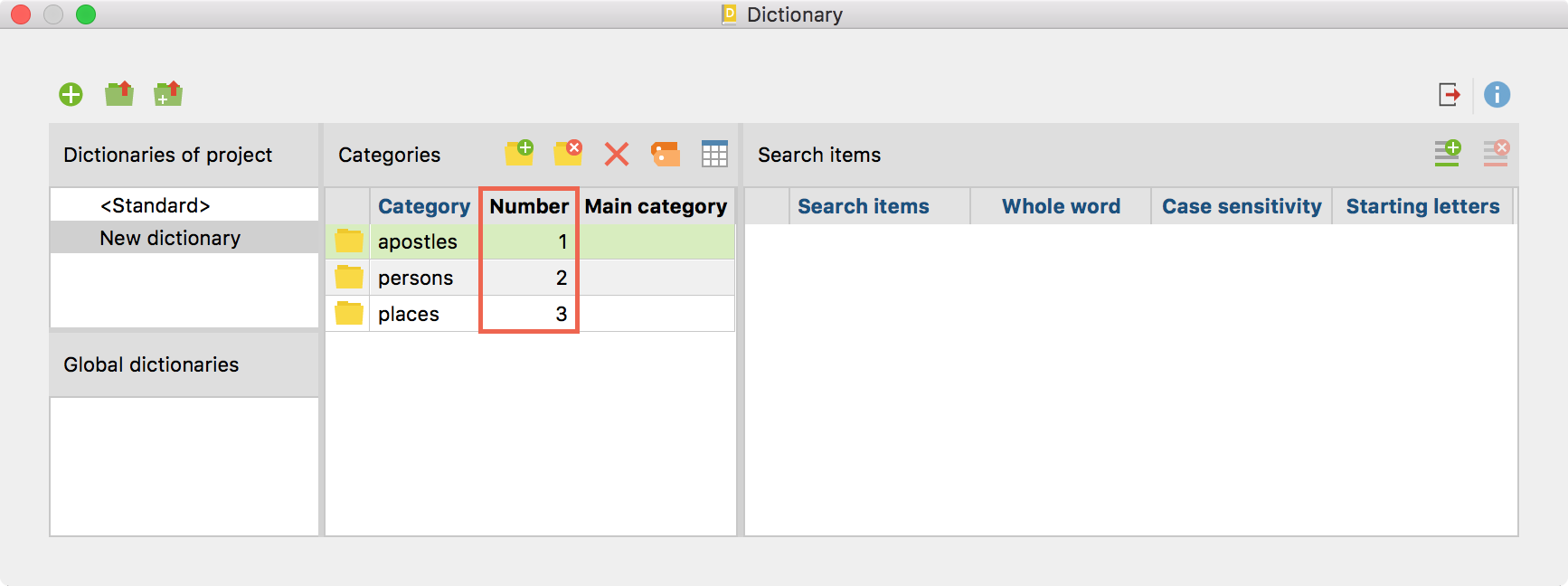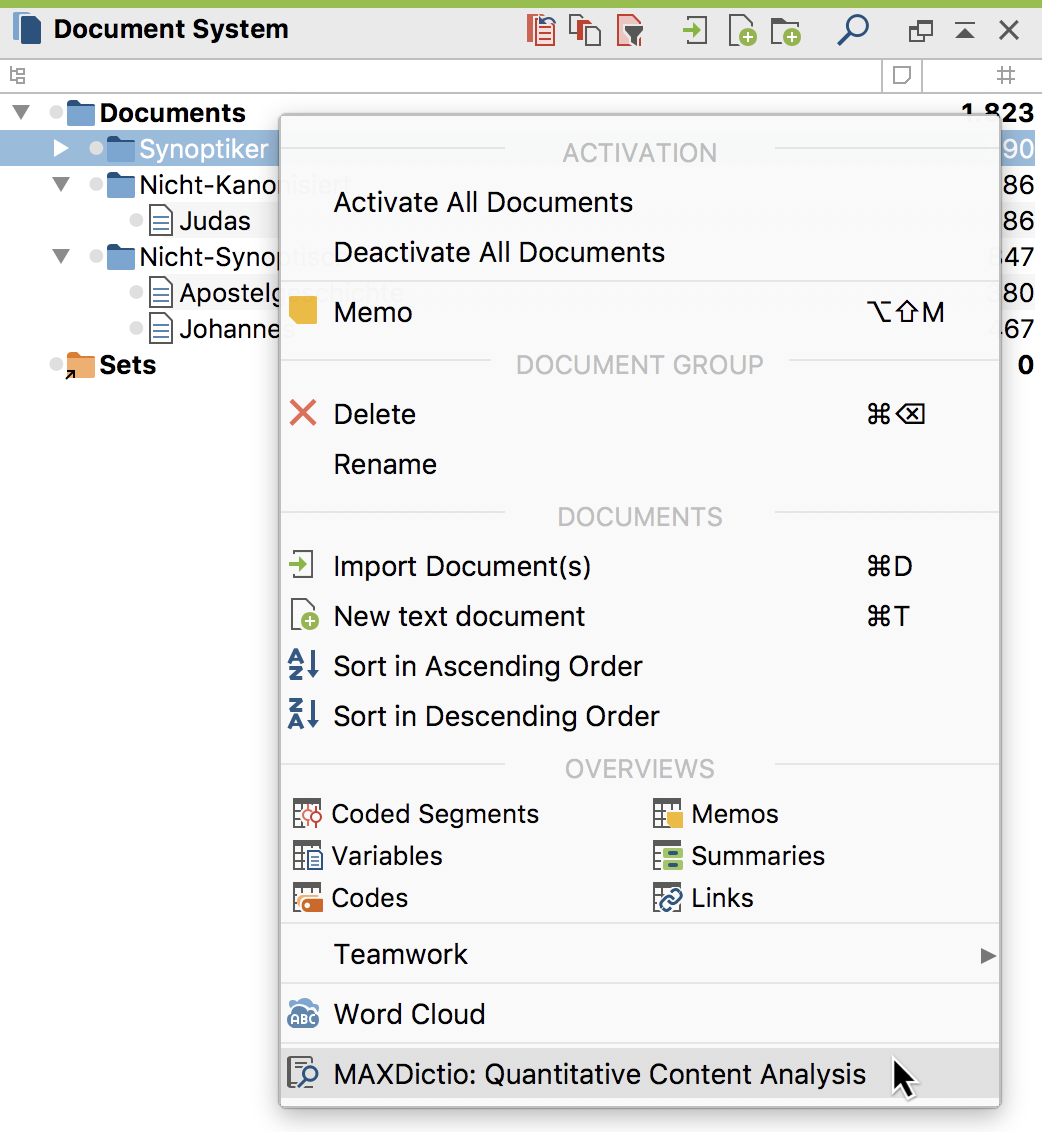With MAXDictio, a quantitative content analysis can be carried out to determine how frequently the search terms of the individual categories of a dictionary occur in a freely definable text corpus. The result of the material transport is a matrix containing the frequencies of the categories, e.g. the output is strictly quantitative.
To run a quantitative content analysis, select MAXDictio > Quantitative Content Anaylsis in the ribbon menu.

The following dialog window will appear:

Options
In the upper pane of the window, define the units of analysis, i.e. the breakdown of the results table:
Documents – The results table will contain a row for each document, so that the category frequency per document can be compared.
Document groups – The results table will contain a row for each document group, so the frequencies per group can be compared with one another.
Document sets – The results table will contain a row for each document set, so the frequencies per set can be compared with one another.
Only activated documents – Only activated documents are taken into account. If a document group or document set does not contain activated documents, the respective group or set will not be shown.
Differentiate by codes – The units of analysis (documents, document groups or document sets) selected in the dialog above will be subdivided into the codes assigned in the documents. The results table will contain one row for each code per unit of analysis, so if four texts have been analyzed and three codes have been selected, the results table will contain 4 x 3 = 12 lines. This option is recommended if text documents have been further subdivided by coded segments. You can use the Select Codes button to determine which codes are taken into account.
Count same words only once – Here you can determine how the words or search items should be counted that appear more than once in the same unit of analysis. If you only want the counter to count them once, select the appropriate option. If, for instance, a category contains the search item “Peter,” a unit will be counted once, no matter whether “Peter” is found one or more times in the given text unit. Suppose the category “apostles” contains the names of the 12 apostles as search items. The counting result 12 means that all 12 apostles have been found in this counting unit, given that the option has been selected. Otherwise, if this option hadn’t been selected, the counting result would not allow such a conclusion.
Exclude units of analysis with 0 words from reult table – This option only concerns structured texts. Here you can set if empty units are displayed or not. Empty units may occur if an empty text has been analyzed or a code has not been applied to text. Please see Analyze Structured Texts for more information.
Create and open validation file to check search hits – Further, you have the possibility to create a validation file. Such a file allows you to carefully review the search hits. The validation file contains the original text of each unit of analysis. The locations where search items have been found are marked. Behind each search hit, you can find an identification number (ID-number) in brackets which points to the assigned category. The ID-number is determined when the category is created and is shown in the categories window. Categories can also be assorted by their numbers, and so you can create an assorted printout of the dictionary. This printout might be helpful when monitoring the validation file. At the head of a validation file is a legend which provides information about the assignment of the categories to the individual numbers.

The following lines are a short extract from a validation file:
Now in the fifteenth year of the reign of Tiberius Caesar, Pontius Pilate[2] being governor of Judea[3], and Herod being tetrarch of Galilee[3], and Philip[1] his brother tetrarch of Iturea, and the country of Trachonitis, and Lysanias tetrarch of Abilina; Under the high priests Annas and Caiphas; the word of the Lord was made unto John[2], the son of Zachary, in the desert. And he came into all the country about the Jordan[3], preaching the baptism of penance for the remission of sins; |
Begin count from the “Document System”
The dictionary-based content analysis can be started directly from the “Document System” for the text documents of a selected level. Right-click one of the following levels and select MAXDictio: Quantitative Content Anaylsis:
- Single document
- Document group
- Document set
- Root in the “Document System” for all documents
The same dialog window will appear, depending on the selected level, however, the selection of the units of analysis is limited. For example, a breakdown by document group cannot be obtained for a single document.

